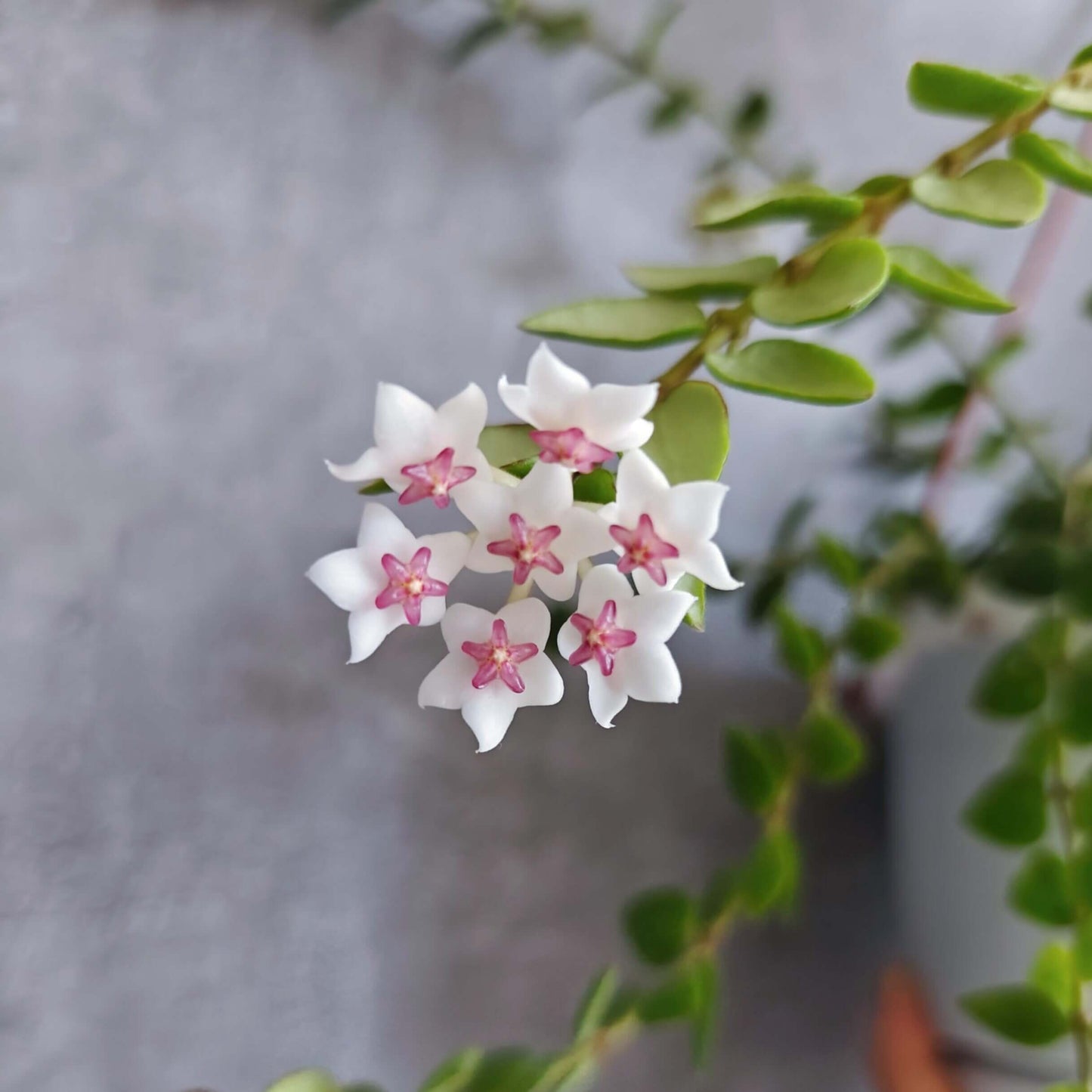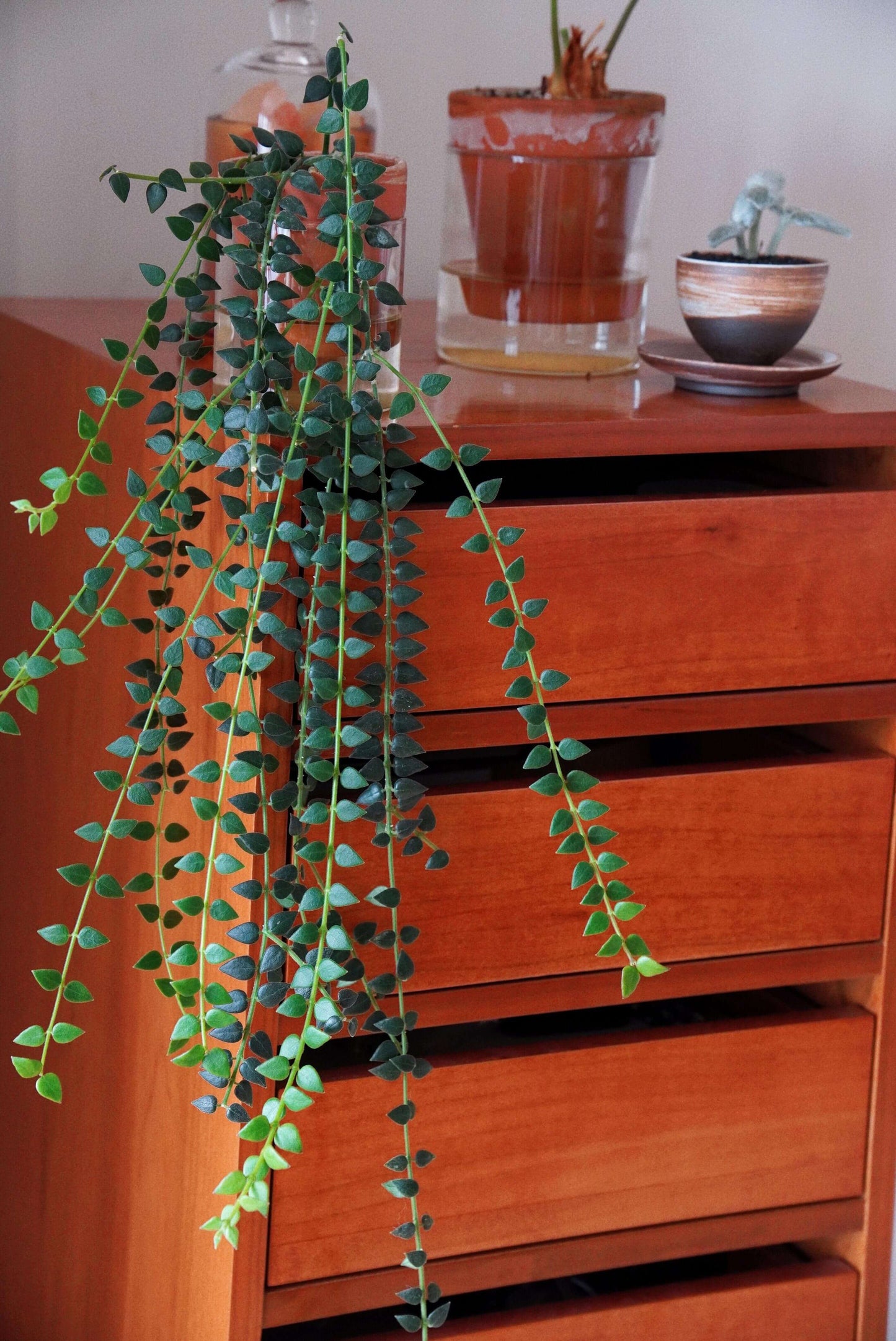Begin With Plants
Hoya chinghungensis
Hoya chinghungensis
Couldn't load pickup availability
Hoya chinghungensis is an epiphytic shrub that naturally grows on trees or rocks in humid forest environments. Its native range includes southern Yunnan in China, as well as Myanmar, Laos, and Vietnam.
Features:
-
Plant habit: pendent / trailing vines that can reach ~ 2 meters in length. The branches often branch near the base.
-
Leaves: small (about 1-1.5 cm long, ~0.7-1.1 cm wide), broadly ovate to rounded-triangular, glabrous (smooth) surface, petiole ~1.5 mm, leaf base rounded or truncated, apex from acute to obtuse.
-
Flowers: appear in terminal clusters (pseudumbels) with 4-5 or sometimes up to 7 flowers. The flowers are ~1-1.2 cm diameter, white corolla, with sepals and pedicels that are slightly hairy (puberulent). Bloom period in wild around June; fruiting July-October.
Care Tips:
-
Light: Bright, indirect light works best. Avoid direct afternoon sun to prevent leaf burn. Some dappled light under canopy-like conditions mimics its natural habitat.
-
Watering: Let the top of the soil dry out slightly between waterings. Overwatering risks root rot; underwatering can cause leaf drop or yellowing. More frequent water in spring/summer, less in fall/winter.
-
Soil / Medium: Use a well-draining mix with good aeration. Components like orchid bark, perlite, pumice, charcoal etc. are good. Since it’s epiphytic, the roots like airflow.
-
Temperature: Prefers moderate to warm temperatures ~ 18-25 °C (64-77 °F). It can tolerate somewhat cooler, but avoid letting it drop too low (below ~10-12 °C).
-
Humidity: Moderate to high humidity is ideal (50-65 %+). Since it comes from cloud forest areas, it benefits from humidity, misting, or more humid microclimates.
-
Fertilizer: During active growth (spring/summer), feed lightly with a balanced fertilizer every few weeks. Reduce feeding when growth slows.
-
Pruning / Maintenance: Trim to keep in shape, remove any yellow or dead leaves. Avoid disturbing flowering spurs so the plant can rebloom. Good air circulation helps prevent fungal issues.
-
Propagation: Easily propagated via stem cuttings with nodes. Provide high humidity, warm conditions and keep substrate moist but not soggy until roots establish.
Share





